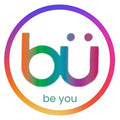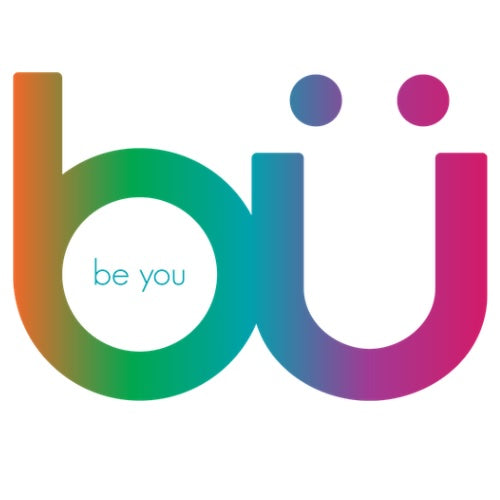100% mineral! Chemical-free, Natural, I'm so tired of the mis-information.
As the Sunscreen Evangelist, I have been manufacturing, marketing, and educating people on sun safety and sun awareness for over 30 years. From day one, I have told people the truth about sunscreen. All sunscreens are chemicals, period. The worst part is that I'm so tired of all the MIS-INFORMATION and marketing BS from competitors and watchdog groups.
When you pick up a sunscreen labeled "mineral," you expect pure, natural protection from the sun. But look beyond the active ingredients and marketing, look at the in-active ingredients, many of these sunscreens blurring the lines between mineral and chemical.
Butyloctyl salicylate – one of the hidden player in the sunscreen game. It's good to unravel the truth behind this ingredient and what it means for your skin's safety.
What is Butyloctyl Salicylate (BOS)?
Butyloctyl salicylate is a synthetic ester derived from Salicylic Acid and Butyl Octanol. It's in a lot, over 300 sunscreens, and it's a modified version of Ethylhexyl Salicylate, also known as Octisalate, a chemical sunscreen ingredient. So, why is it in your "all mineral" sunscreen, and is it safe?

WHY use Butyloctyl Salicylate in Mineral Sunscreens: A Game Changer?
1. Superior Spreadability: This ingredient is a master of disguise, ensuring your sunscreen glides smoothly and evenly. No more white streaks or patchy coverage!
2. Enhanced UV Filter Performance: Butyloctyl salicylate boosts the solubility and stability of UV filters, making your sunscreen more effective at shielding you from harmful rays. Because it's a UV filter itself?
3. Luxurious Texture: Say goodbye to greasy, heavy sunscreens. This ingredient gives mineral sunscreens a lightweight, silky feel that makes application a breeze.
4. Long-Lasting Protection: It helps your sunscreen stick to your skin, offering prolonged protection even during intense sun exposure.
Is Butyloctyl Salicylate Safe? The Controversy, the truth!
For those that know and care about the truth, Butyloctyl salicylate has been a hot topic. It is a "chemical" UV filter, yet Health Canada and the FDA have not regulated it. Hence, it's not listed as an active ingredient but as an inactive ingredient.
This issue is not that these ingredients are not safe, remember they are all chemicals but rather that the consumer is being misled into believing they are getting a 100% Mineral sunscreen when, in reality, they are also getting chemical UV filters. Again, it works, we use it, but shouldn't you know the truth about what you are using? Then you can decide on any sunscreen you like, as long as you apply it properly and don't be shy to reapply, you'll be protected.
The manufacturers that market "natural brands" and the watchdog groups such as EWG, Yuka, and Think Dirty list Butyoctyl salicylate as a photostabilizer to boost the sun protection factor (SPF), and YES, it does, as it's a UV filter. All you need to do is go to one of these sites and look up the TOP choices for "100% Chemical or Mineral" sunscreens and check out the in-actives. What you will find is eye-opening! If BOS is listed in the inactive ingredients, don't believe the "chemical-free" claims, not to mention that the cosmetic form of Zinc oxide and Titanium dioxide, which are required, are also chemicals.
But don't despair; a handful of manufacturers tell the truth. One in Ontario, Canada, has done a great deal of research and found definitive proof that Butyloctyl salicylate is, in fact, Octisalate, and I commend them. See the information that they received from Sunjin, a Korean ingredient supplier.
Are "All Mineral" Claims Misleading?
Yes, you heard that right! ZnO and Ti02 are chemicals, and the inclusion of Butyloctyl salicylate, or Tridecyl salicylate, or Ethylhexyl methoxycrylene (to name a few product in the in-actives list) in mineral sunscreens makes "all mineral" claims 100% misleading, not true, and a lie! These sunscreens have so-called minerals like zinc oxide and titanium dioxide as their active ingredients. The issue is the presence of chemical sunscreens in their inactive ingredients list, which means they aren't purely mineral-based. The worst part is how so many of them "TRASH" chemicals, when they are hiding them in the in-actives, and they'll stick by: "It's 100% Mineral or Chemical Free - in the Active Ingredients", wow, making chemicals the villain, they use them too.
There are some companies that make mineral sunscreens without using Butyloctyl salicylate, including one from Canada (Ava Isa) that I mentioned above and some others that are thick Zinc oxide creams.
Here's what you need to know:
• As a UV filter, it helps absorption like its twin, Octisalate, approved to a maximum of 5%. It helps to increase the SPF of mineral-based ingredients, which also absorb, yet reflect 5%-10% and helps to decrease the white cast. Again, the whole mis-information that chemical sunscreens absorb and mineral deflect. This simply isn't true, mineral absorb UV rays as well but they do deflect 5%-10%. So, they do deflect a little, but not 100%.
The Final Verdict: Should You Be Concerned?
Incorporating Butyloctyl Salicylate in mineral sunscreens offers benefits – from better application to enhanced UV protection. But if you're committed to an all-natural, all-mineral sunscreen, this ingredient or the others is a deal-breaker, just so you know. If you like the product, great, but it's good to know and you can try other options if you like.
The other issue is that manufacturers reduce the quantity of "inorganic" UV filters, Zinc oxide, and Titanium dioxide so that you don't have the white cast/film on your skin. Still, it can lower the UVA protection that Zinc oxide provides.
The biggest red flag is that since it's unregulated, what is the percentage they are using in the in-actives? Is it the same as its twin, Octisalate, at 5%, or is it more, since it's in the in-actives and the percentages don't have to be listed?
So, why choose BU sunscreen sprays?
First, it's the FEEL, it feels great on your skin, and works on all skin tones.
At BU, we believe in and prioritize our products' efficacy and safety. Our sunscreens are formulated with high-quality ingredients to ensure maximum protection against harmful UV rays. We believe in transparency on your skin and we want our customers to be fully aware of what they are applying to their skin. Know what's in your sunscreen and make the right choice for you.
Unmask the truth about your sunscreen! From Reef-Safe, again knowing NONE of them, nor are humans, safe for the reef to: is it truly "mineral," or is it hiding a synthetic secret? Stay sun-safe and informed with BU Sunscreen – where transparency meets performance.
SOME ADDITIONAL INFORMATION on "unregulated" chemical ingredients, from companies or people I respect for telling the truth and having the knowledge they have:
https://labmuffin.com/100-mineral-sunscreens-using-unregulated-chemical-filters/
https://theeverygirl.com/skincare-product-red-flags/
https://onlinelibrary.wiley.com/doi/full/10.1111/phpp.12214












